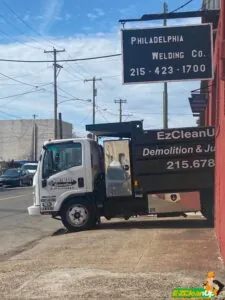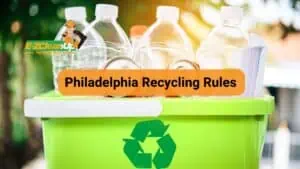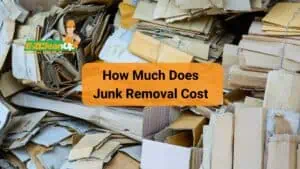To manage fiberglass waste responsibly, explore recycling options like mechanical, thermal, and chemical methods. You can also consult local waste services for disposal of non-recyclable fiberglass. They will ensure environmental safety and adherence to regulations.
If you want to learn more ways on how to dispose of fiberglass, read our guide.
Options for Fiberglass Disposal and Recycling
Improper disposal of fiberglass can lead to microplastic pollution. It can pose risks to marine ecosystems and release harmful fibers into the air, affecting respiratory health.
Moreover, it can contaminate soil and water, which can have damaging effects on local wildlife and water sources. Adhering to disposal regulations helps minimize these risks and contributes to a sustainable future.
Recycling Fiberglass
Recycling fiberglass is challenging due to its complex composition. This involves chemically bonded glass fibers and resin. This complexity makes the separation process for recycling purposes difficult. However, there is a growing demand for recycling due to environmental concerns and the need for sustainable materials.
Fiberglass Recycling Techniques: Mechanical, Thermal, and Chemical
There are three primary methods for recycling fiberglass:
Mechanical Recycling
This involves physically breaking down fiberglass into smaller pieces or powder, which can then be used as filler for lower-grade composites. This method is straightforward and can utilize 100% of the waste material. However, it significantly reduces the glass fibers’ length and suitability for high-strength applications.
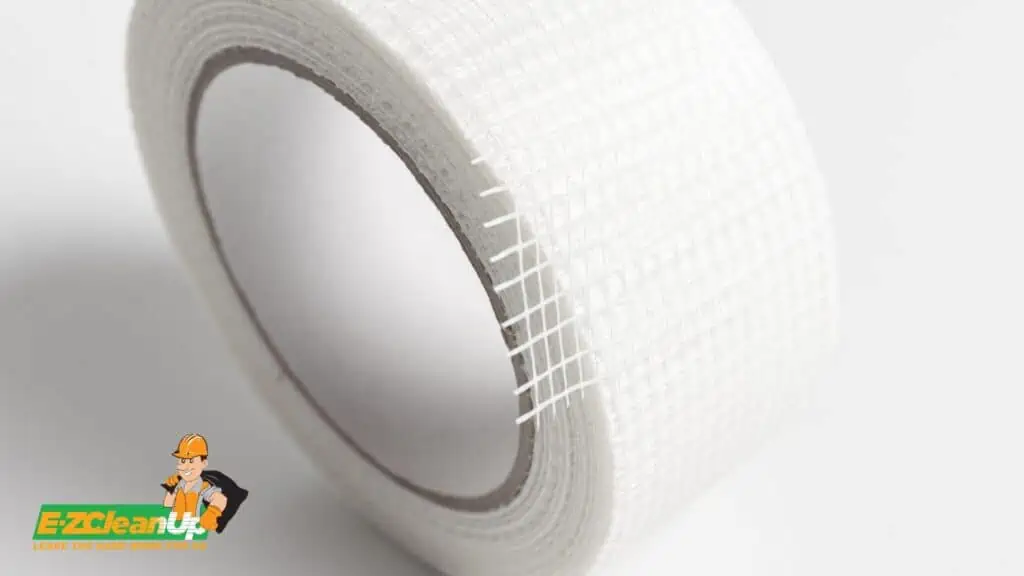
Thermal Recycling
This employs heat to transform expended fiberglass into usable materials. These include turning the organic compounds in the plastic into gas and oil through pyrolysis. Another approach is using the waste as fuel in cement kilns. This involves the organic part burning away while the remaining glass minerals are incorporated into the cement mixture.
Chemical Recycling
This recycling method involves dissolving the plastic matrix to separate it from the reinforcing fibers. It is relatively new and not widely used on a commercial scale due to its high cost and energy demands. However, it offers the advantage of preserving the fibers’ quality.
Disposal of Non-Recyclable Fiberglass
For fiberglass that cannot be recycled, disposal typically involves local waste collection services. Most recycling facilities do not accept fiberglass due to its challenging recyclability.
In cases where fiberglass waste is contaminated with hazardous substances, specialized hazardous waste facilities may be required for proper disposal. These facilities have the right equipment to ensure environmental protection and safety.
Innovative Reuse and Repurposing Strategies
These strategies reduce environmental impacts while introducing new and creative ways to utilize fiberglass waste, particularly from sectors like wind energy and marine industries.
Reusing Fiberglass in Construction and Industrial Applications
The Rhode Island Marine Trades Association (RIMTA) in the USA has pioneered a project that transforms end-of-life fiberglass hulls into a resource for cement manufacturers. This method, which mirrors practices in Europe, involves shredding fiberglass hulls to be used in cement products. This technique demonstrates a practical approach to repurposing fiberglass waste.
Global Fiberglass Solutions Inc. (GFSI) has also made significant strides by recycling old wind turbine blades into various products. These include manhole covers, building panels, and pallets made through a patented process. This involves grinding fiberglass waste into recyclable feedstock, mixed with other compounds, to create new, sustainable materials.
Creative Projects for Repurposed Fiberglass Materials
On a creative front, old wind turbine blades and other fiberglass materials are finding new life in community art and functional products. Projects range from structural applications to artistic installations that showcase the versatility of repurposed fiberglass.
For instance, decommissioned blades have been creatively transformed into outdoor furniture and playground equipment.
In Germany, Zagons Logistik is reprocessing wind turbine blades on an industrial scale. It employs a series of cutting, crushing, and shredding techniques to prepare the material for use in cement production. This process utilizes the fiberglass content while replacing coal ash and virgin sand in cement mixtures. This highlights a circular economy approach to fiberglass disposal.
Moreover, initiatives like Eco-wolf in Florida and the Japan Marine Industry Association‘s recycling program have developed methods to reincorporate fiberglass waste into new production cycles.
These innovative reuse and repurposing strategies for fiberglass provide a solution to waste management challenges and open up possibilities for sustainable development and creative expression. By transforming waste into valuable resources, these practices set a precedent for environmental responsibility and innovation in the use of fiberglass materials.
Compliance with Local and Federal Disposal Regulations
Regulations vary by region but typically include directives on landfill disposal, incineration, and recycling processes. For instance, some countries in Europe have made the disposal of fiberglass in landfills illegal. They push for more sustainable disposal methods such as recycling and repurposing.
In contrast, places like the United States still allow fiberglass disposal in landfills, although this practice is increasingly scrutinized for its environmental impacts.
Environmental Impacts of Improper Fiberglass Disposal
Improper disposal of fiberglass can lead to environmental pollution over time. When fiberglass waste is not properly managed, it can contaminate land and water sources. They can affect both ecosystems and human health.
Meanwhile, incineration of fiberglass can release harmful gasses and particles into the atmosphere, while landfill disposal contributes to long-term environmental pollution.
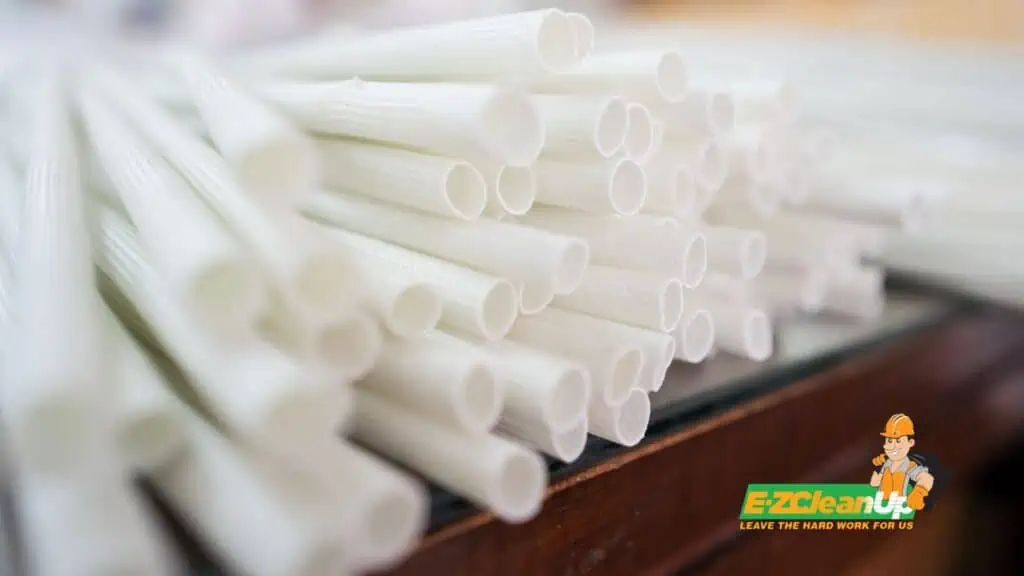
Addressing the Challenges
Efforts to reduce the environmental hazards associated with fiberglass disposal include promoting recycling and upcycling initiatives. Recycling fiberglass into new products, such as outdoor furniture or insulation, is a viable option. However, it may pose challenges due to the material’s complex composition.
Education on proper disposal methods is essential for boat owners and fiberglass users. Awareness of the environmental and economic impacts of improper disposal can encourage adherence to best practices. Moreover, government and industry initiatives to develop and support recycling infrastructure can foster the sustainable management of fiberglass waste.
Understanding Fiberglass Composition and Types
Fiberglass, a composite material, combines glass fibers with resin to create fiber-reinforced plastic (FRP). The end product offers strength, durability, and resistance to various environmental factors.
Components of Fiberglass: Resin and Glass Fibers
Fiberglass is produced through a process called pultrusion. This is where silica sand, limestone, kaolin clay, and other minerals are melted into a liquid and then extruded through small orifices to form glass fibers.
These fibers are coated with a chemical solution to bind them into rovings. They can be used directly in composites or to manufacture fabrics such as chopped strand mat (CSM), woven fabrics, or unidirectional fabrics. The resin acts as a matrix that holds the glass fibers in place. It provides structural integrity and determines the final properties of the fiberglass product.
Different Forms of Fiberglass and Their Disposal Implications
Fiberglass can be categorized into various types based on its composition and intended use. Each type has distinct properties that influence its disposal and recycling methods.
Glass Reinforced Plastic (GRP)
GRP, often composed of polyester or epoxy resins combined with glass fibers, is found in products like boat hulls, automobiles, and consumer electronics. The challenge with recycling GRP lies in separating the glass fibers from the resin, a process that is currently complex and costly.
Fiberglass Insulation and Construction Materials
These materials primarily consist of E-glass fibers, known for their electrical insulation properties and resistance to heat. They are utilized in various applications due to their lightweight nature and resistance to environmental factors.
Innovations in recycling technologies, such as chemical processes, are making it more feasible to recycle these materials. However, the industry continues to face challenges with disposal and reuse.
Implications for Disposal and Recycling
The disposal of fiberglass materials poses environmental challenges, primarily due to their non-biodegradability and the difficulty of separating glass fibers from resins. Recycling efforts are improving, with methods like pyrolysis and mechanical recycling being explored.
This is mainly due to their potential to reclaim and repurpose fiberglass materials. However, the economic viability and environmental impact of these processes continue to be areas of active research and development.
Safety Precautions for Handling Fiberglass
Handling fiberglass requires awareness and adherence to safety measures due to its potential health hazards. The material, while invaluable for insulation and other uses, can cause irritation to the skin, eyes, and respiratory system if not handled properly.
Health Hazards Associated with Fiberglass Exposure
Fiberglass is made of tiny glass fibers that can irritate the skin, eyes, and respiratory tract upon contact. When these fibers are inhaled, they may worsen conditions like asthma or bronchitis. Direct contact with the skin or eyes can lead to soreness, itching, or rashes.
Moreover, inhaling fiberglass dust might pose risks similar to those associated with asbestos exposure. However, recent studies provide no evidence of increased risks of lung cancer or mesothelioma from occupational exposures.
Personal Protective Equipment (PPE) for Safe Handling
To minimize the risk of exposure to fiberglass, it’s crucial to wear the right personal protective equipment (PPE):
- Respiratory Protection: A dust mask or respirator is essential to prevent inhalation of fiberglass particles.
- Eye Protection: Safety glasses or goggles should be worn to protect the eyes from irritation.
- Skin Protection: Gloves, long-sleeved shirts, long pants, and tall socks are recommended to cover the skin. A hat or hood and a scarf or bandana can provide additional protection for the hair and neck.
Additional Safety Measures
Here are the other guidelines to follow to effectively minimize the risks associated with handling fiberglass:
- Keep the Work Area Well-Ventilated: Ensuring good airflow can help reduce fiberglass dust concentration in the air.
- Use Dust-Control Measures: Employing tools with dust-collection features and cleaning up with a vacuum equipped to handle fiberglass can further minimize exposure risks.
- Proper Clothing and Hygiene: Wearing appropriate clothing and washing thoroughly after handling fiberglass can prevent skin irritation. Clothes worn during work should be washed separately to avoid contaminating other laundry.
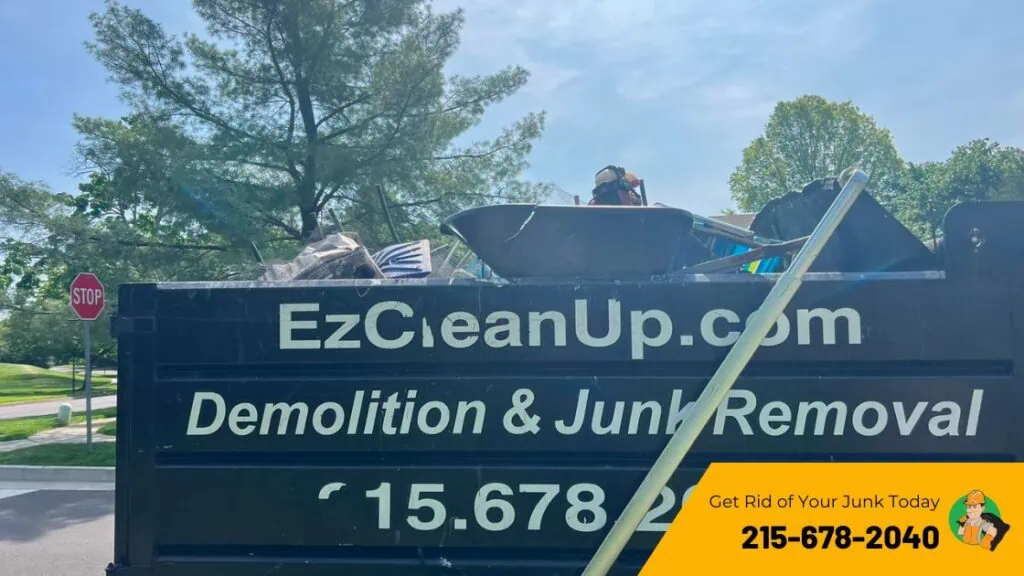
EZ Fiberglass Disposal
It’s crucial for individuals and businesses to seek responsible methods for handling fiberglass. This will help reduce environmental impacts and safeguard health. EZ CleanUp is at the forefront of providing solutions for the responsible disposal of most types of junk, including fiberglass.
We ensure that materials like fiberglass (and other junk that you may have—appliances, mattresses, you name it) are handled with care. Let’s collaborate to ensure a cleaner, safer environment for future generations.
Call us and choose EZ for your fiberglass disposal needs.


